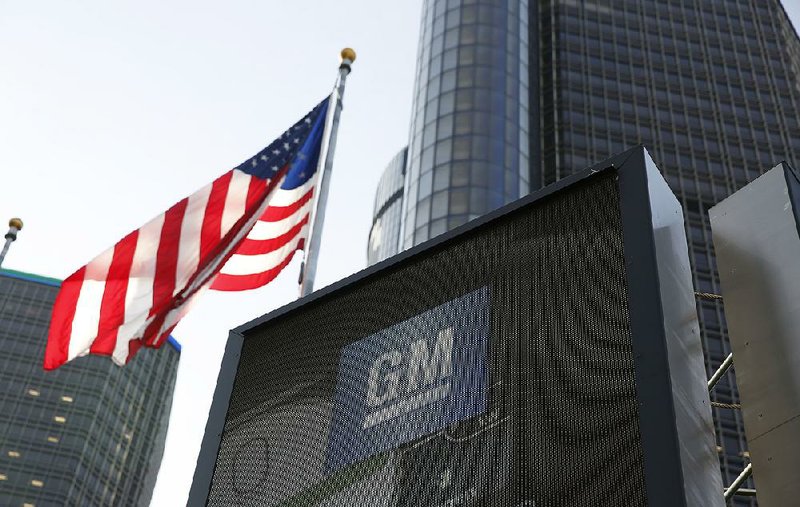The technological skills General Motors' employees had yesterday are continuously becoming outdated.
That is the underlying message of Chief Executive Officer Mary Barra's move Oct. 31 to offer voluntary buyouts to GM's North American salaried workers with 12 or more years of experience with the company, experts say.
On the surface, it's typical cost-cutting ahead of a potential dip in new-car sales and rising raw material costs. But there's another reason.
"GM is signaling a change in vehicle technology. If they go into electric more rapidly, then they do not need the same engineers they have now," said Maryann Keller, principal of Maryann Keller & Associates in the New York area. "The advent of electric vehicles has profound implications for employment in the auto industry's competition and the skill sets needed to compete."
Barra hails from a human resources background, so targeting employees with long seniority and high pay grades is strategic when a company is moving toward the development of more electric cars, fuel cells and autonomous vehicles, experts say. It means redeploying the workforce and freeing up significant capital, said Marick Masters, professor of business at Wayne State University.
"Technology has changed so fast and is changing so fast that if you've been out of school 10 or 20 years, you're not at the leading edge anymore," said Masters. "This will give GM an opportunity to create a greenfield of sorts, to create a new company within a company."
The company's current cost structure and product mix make it more vulnerable to a sales downturn than Ford and Fiat Chrysler, said market economist Jon Gabrielsen, an adviser to the auto industry. He said GM can afford to lose only a quarter of its current car sales in North America before going in the red.
The company won't say which jobs or which areas of the business it looks to trim beyond saying the offers are voluntary -- for now -- and will go to employees with 12-plus years experience.
About 17,700 of GM's 50,000 salaried workers in North America have the seniority to qualify for a buyout offer. Experts say that indicates the bulk of GM's workers are new to the company, possibly with a focus beyond traditional vehicle design and engineering.
A GM spokesman confirmed that "about 40 percent" of its U.S. workforce has been with the company five years or less.
The company's changing focus opens up opportunities to millennials, those people ages 22 to 37 who might change their perception of GM from that of a stodgy car maker that filed for bankruptcy nine years ago to a technology company that offers some advantages over that of a startup, Wayne State's Masters said.
But for older workers already in the auto industry, it means they must up their game and continuous training is a requisite.
"I don't know if they're extinct or need a new degree, but they need to be engaged in continued learning and advancement," said Masters. "They need to be agile. Organizations do not guarantee lifetime employment anymore. This is a statement that the world is changing."
The "new" GM will want workers who are highly creative and capable of working autonomously as well as collaboratively, Masters said. The future employee will take initiative and have a strong technology background, good communication skills and project-management capability. GM might do more contract hiring to keep fixed costs low and GM's agility high, he said.
"China is taking the lead in electric vehicles. Ford has an aggressive plan to redeploy its investments along those lines, too," Masters said. "So GM has to have the flexibility to free up staff and have the capital available to invest in this technology."
GM has been on an aggressive hiring spree in part because it wants to be first to deploy a fleet of self-driving electric cars in a city next year. In fact, the same day it said it would trim its workforce, a spokesman told the Free Press it will continue to hire in certain areas it is expanding, namely engineering and technology for its work on self-driving and electric cars.
Two years ago, GM bought its self-driving vehicle arm, GM Cruise. Cruise employed 40 people at that time. Today it employs about 800, said GM President Dan Ammann.
GM said it does not have a target for how many salaried workers it wants to take the offers. But if it doesn't remove enough costs from that and other efforts, such as halting renovation work at two Michigan facilities, it will consider involuntary job cuts after Jan. 1.
For that reason, Keller said she expects the voluntary buyouts will get a higher than usual acceptance rate.
"Knowing that there will be cuts no matter, and the labor market is strong, should increase the take rate," said Keller. "I don't recall what it was in the past, but it was low when jobs were scarce."
Gabrielsen believes only 10 to 20 percent will take the offers and GM will be forced to cut jobs to support earnings amid plateauing new-car sales and rising commodities costs. In total, he estimated about 7,000 salaried GM employees in metro Detroit will be gone through the voluntary or involuntary termination.
"Typically, in downturns, they start off hoping they won't have to cut too bad," said Gabrielsen. "But as things cycle down in the industry, you have to do another tranche and another tranche and another."
Business on 11/08/2018

